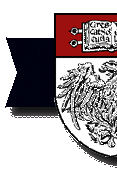 |

The OI gives
the ancient temple of Amun a new lease on life
From the rooftop
of a small temple on the west bank of the Nile, one can see all
of Medinet Habu, a vast expanse of gateways, courtyards, and ancient
structures rich in decoration. The Oriental Institute's Epigraphic
Survey, now in its 75th year, has been documenting the site since
1924, when James Henry Breasted founded Chicago House, the U of
C's Luxor, Egypt, headquarters.
But it is
what is directly underfoot—the temple of Amun—that is particularly
important at the century's close. Built in the 15th century b.c.
on the site where the eight Egyptian gods of creation were believed
to be buried, the temple is one of the most sacred sites in the
most sacred area of ancient Egypt, yet nature and thousands of years
of use are slowly destroying it. As the stone foundations have settled,
the walls have become unstable and blocks have cracked. Moisture
seeps into the ancient stones. Many of the temple's reliefs—carvings
in stone over which paint is applied—and paintings are covered with
bird droppings and soot from fires made by people who used the temple
for temporary shelter throughout the centuries. Rainstorms have
penetrated the sanctuary, staining paint and washing mud over carved
details.
Hoping to
preserve the antiquities for posterity, the Epigraphic Survey has
undertaken a five-year conservation, restoration, and documentation
project with the help of a $455,000 usaid grant from the Egyptian
Antiquities Project, administered through the American Research
Center in Egypt. When completed, the temple will be open to the
public, providing scholars and tourists a remarkable look at Egyptian
history, architecture, and religion from 1500 b.c. to the second
century a.d.
"We are resurrecting
and reconstructing the dismantled temple itself, bringing it back
from the dead," says survey director W. Raymond Johnson, PhD'92.
"By recording these monuments as precisely as we do, we are ensuring
their preservation and perpetuation for eternity, just as the ancient
Egyptians so fervently desired."
Many of the
peoples who ruled Egypt—including the pharaohs of the New Kingdom,
the Kushite invaders from the south, the Ptolemaic dynasties of
Hellenistic time, and finally, the Romans—left their mark on the
temple. The temple's oldest part, which is 100 feet long and 43
feet wide, was built by Queen Hatshepsut and her nephew, King Thutmosis
III, in 1460 b.c. About 300 years later, Ramses III enclosed the
temple within his great mortuary complex "to lend his temple additional
sanctity," explains Johnson. Successive rulers added to, rebuilt,
and repaired the structure until a.d. 138, when a great Roman forecourt
was begun but not completed. All together, these additions enlarged
the temple area to 353 feet by 133 feet.
The accurate
documentation, or epigraphy, of the temple's inscriptions and reliefs
started in 1990. The Chicago House method begins with photographing
the inscribed wall surface. An artist traces the inscription on
the photograph in pencil, then in ink. The photograph is treated
chemically so that the image dissolves and the inked line drawing
remains. After blueprints of the drawing are made, one is cut into
small pieces and mounted on collation sheets, which the epigraphers
compare to the original inscription, noting corrections. Finally,
an artist enters the corrections on the original drawing, which
is checked one more time before publication.
But the big
push to conserve and restore the temple itself started in the 1996–97
season: to minimize salt damage, some exposed foundations made of
reused Kushite blocks were documented and reburied. The following
season, conservation focused on the roof. Workers removed debris
from the cracks between the roof blocks, then applied mortar as
a sealant. They also installed a rainspout to take care of the runoff.
"Once the
roof was sealed and the safety of the painted reliefs below was
assured, the cleaning could proceed," says Johnson. "Sealing the
roof stabilized the interior environment and inhibited the migration
of groundwater into the temple." Stonecutter Dany Roy will soon
replace some missing Ptolemaic roof blocks with new blocks cut from
the Silsileh sandstone quarry south of Luxor, where the originals
were quarried.
Work continues
apace in the 1998–99 season, as paintings and inscriptions are cleaned
and documented. On a warm and cloudless day this past November,
16 people were hard at work on the temple. An Egyptian workman steadied
a ladder as survey staff members climbed up to the roof to check
on the repairs. At the temple's front, epigrapher Ted Castle perched
on a ladder 10 feet above the temple floor, checking a pencil drawing
of an inscription against the original on the wall.
"Everything
has to be corrected," he explained, looking at a series of artists'
comments on the drawing. "The camera doesn't pick up every detail."
On a chapel
wall inside the temple, conservator Lotfi Hassan used specially
prepared clay to lift salts and soot from painted images that show
King Thutmosis presenting food offerings to the creator god Amun
in hopes of insuring perpetual provisions.
"Essentially,
what the gods gave to man for his sustenance was given back to the
gods for their sustenance in a never-ending cycle of reciprocity,"
Johnson explains. "This give-and-take situation kept the universe
going and perpetuated life eternally."
Since the current
season began, Hassan has cleaned an entire wall—about 2.5 percent
of the sanctuary's painted surface area. Already the contrast is
striking: the uncleaned area looks dark and sooty, while the reds
and yellows of the cleaned area gleam under electric lights.
"When the
color is preserved, one is struck, even saddened, by the enormity
of what has been lost elsewhere, since so many exquisite details
were only painted and never carved," Johnson says.
Occasionally,
the soot and grime also conceal prayers and inscriptions inked over
the reliefs, attesting to the piety of officials and priests who
were responsible for the care of the temple cult. According to Johnson,
"The closer the proximity of the prayer to the god, the more efficacious
the result. These guys were in charge of the cult, responsible for
the care and feeding of the deities housed within. The writing of
these prayers was undoubtedly considered a major 'perk' of their
work."
During the
next two years, the conservation team will be expanded, a new skylight
will be constructed, and the drawings and other documentation will
be published by the Oriental Institute in a series of books portraying
the temple's inscriptions. In 2001, when the project is completed,
the temple will become a tourist attraction. Ramses III's funerary
complex is already one of the most popular tourist venues in western
Thebes, notes Johnson, adding: "When the Epigraphic Survey is finished
with its documentation and conservation work, the significance and
majesty of both complexes will be accessible, and obvious, to all."
—William Harms
|



